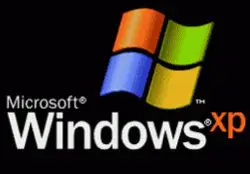Touchscreen improvements for XP-based UMPCs
 Before Vista became one of Microsoft’s UMPC hardware requirements, the company’s operating system of choice was Windows XP Tablet PC Edition 2005. Without it, manufacturers (and users) weren’t able to preinstall the Microsoft Touch Pack, a software suite exclusive to UMPCs that includes DialKeys and a handful of other applications designed to enhance the touchscreen experience.
Before Vista became one of Microsoft’s UMPC hardware requirements, the company’s operating system of choice was Windows XP Tablet PC Edition 2005. Without it, manufacturers (and users) weren’t able to preinstall the Microsoft Touch Pack, a software suite exclusive to UMPCs that includes DialKeys and a handful of other applications designed to enhance the touchscreen experience.
But did you know that you don’t really need an "official" UMPC to take advantage of some of what the Touch Pack has to offer? It’s true. If you have a handtop running Windows XP Home or Professional (e.g., UX280P), you can easily duplicate all of the benefits of one of the most useful apps included in the Touch Pack: Touch Improvements (TI).
TI is actually just a simple one-click utility that pulls together a group of settings already present in Windows that make interacting with a small touchscreen more finger-friendly. Changing these settings on XP Home/Pro computers isn’t as quick and easy as it is with TI, but enabling each one individually can be well worth those extra clicks.
Here’s what all the clicking can get you:
- Wider scrollbars that are easier to manipulate with your fingers.
- Larger screen text to reduce eyestrain and enhance "tap-ability."
- Single finger/stylus taps to open folders and launch programs.
- Content appears in thumbnail view and acts as large finger-friendly "buttons."
- Fewer items listed on the Start menu to preserve your screen estate.
- Program list scrolls on the Start menu.
- Automatic full-screen browsing in Internet Explorer.
The settings can be implemented in any order and in any combination.
Widen scrollbars. Go to Control Panel -> Display -> Appearance tab -> Advanced button. Select "Scrollbar" from the drop-down Item list and input a width in the adjacent Size field. Microsoft recommends 28 pixels, which seems to be the maximum width before the scrollbar begins to pixellate. Tap OK to save the setting.
Enlarge text. Go to Control Panel -> Display -> Appearance tab. Select "Large Fonts" or "Extra Large Fonts" from the drop-down Font size list. Tap Apply and then OK to save the setting. An alternative to this method is to adjust the DPI settings, which I mentioned in my review of the Sony Vaio UX180P’s display. To change the DPI, go to Control Panel -> Display -> Settings tab -> Advanced button -> General tab. Select a preset or custom size from the drop-down DPI setting list. Tap OK and restart your computer to activate the new DPI.
Open items with single taps. Go to Control Panel -> Folder Options -> General tab. Under the Click items as follows section, tap "Single-click to open an item (point to select)" and "Underline icon titles only when I point at them." Tap Apply and then OK to save the setting.
Display thumbnail views. In Windows Explorer, select "Thumbnails" from the View menu and "Folder Options" from the Tools menu. On the View tab, tap "Apply to All Folders" under the Folder views section and then tap Yes to save the setting.
Reduce items on the Start menu. Go to Control Panel -> Taskbar and Start Menu -> Start Menu tab -> Start menu option -> Customize button -> Advanced tab. Under the Start menu items section, clear the check box beside or select "Don’t display this item" below each program you don’t want listed in the Start menu. Tap OK, Apply, and then OK to save the setting.
Scroll all programs on the Start menu. Go to Control Panel -> Taskbar and Start Menu -> Start Menu tab -> Start menu option -> Customize button -> Advanced tab. Tap the box beside "Scroll Programs" in the Start menu items section. Hit OK, Apply, and then OK to save the setting.
Open Internet Explorer in full-screen mode. In Internet Explorer, go to View -> Toolbars -> Customize. Select "Full Screen" and tap Add from the Available toolbar buttons list. In the Current toolbar buttons list, move "Full Screen" between "History" and "Separator." Tap Close and then the "Full Screen" icon on the toolbar. Right-click on an empty toolbar area and select "Address bar."
What else can you do to optimize XP for UMPCs?

